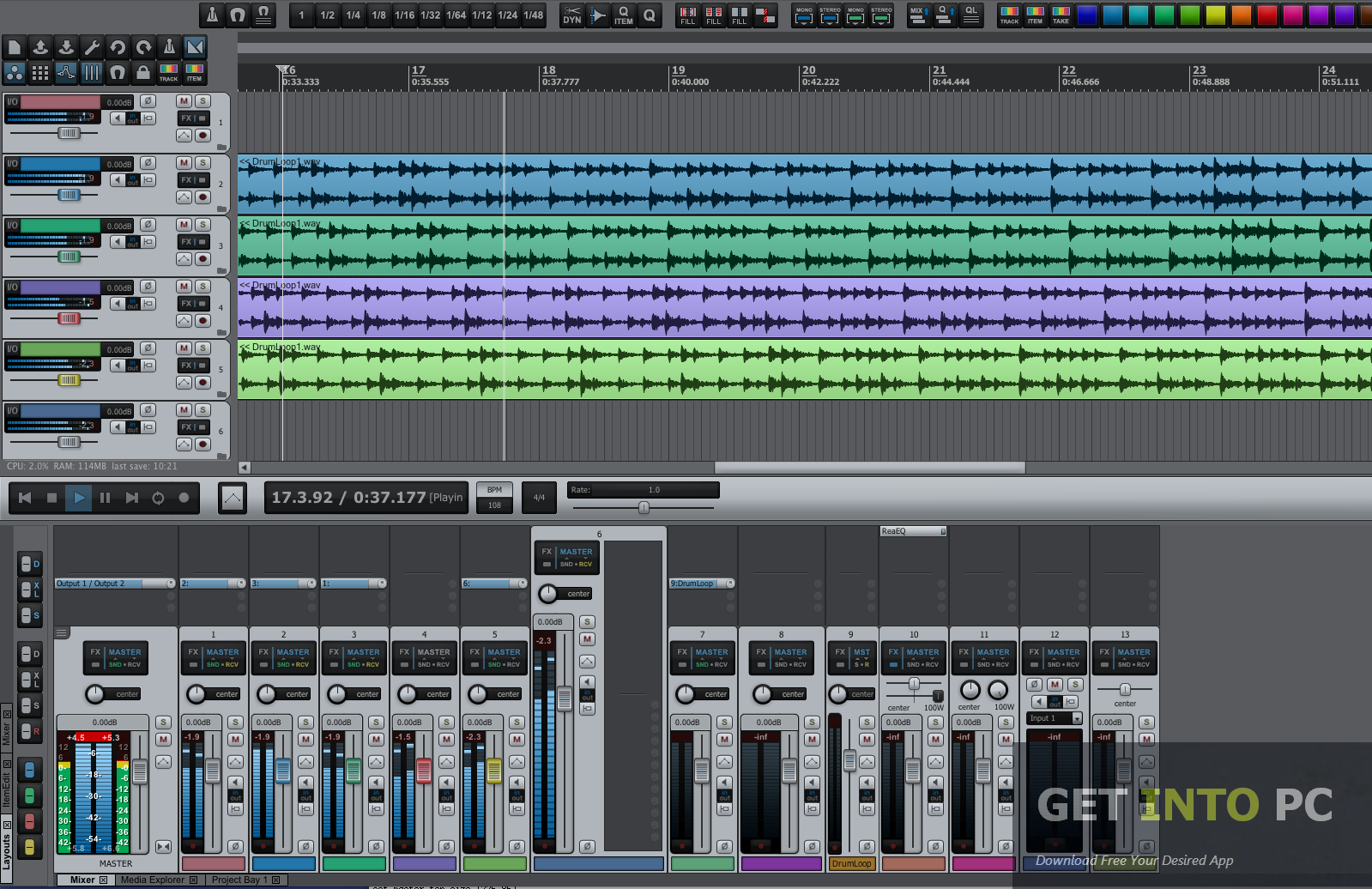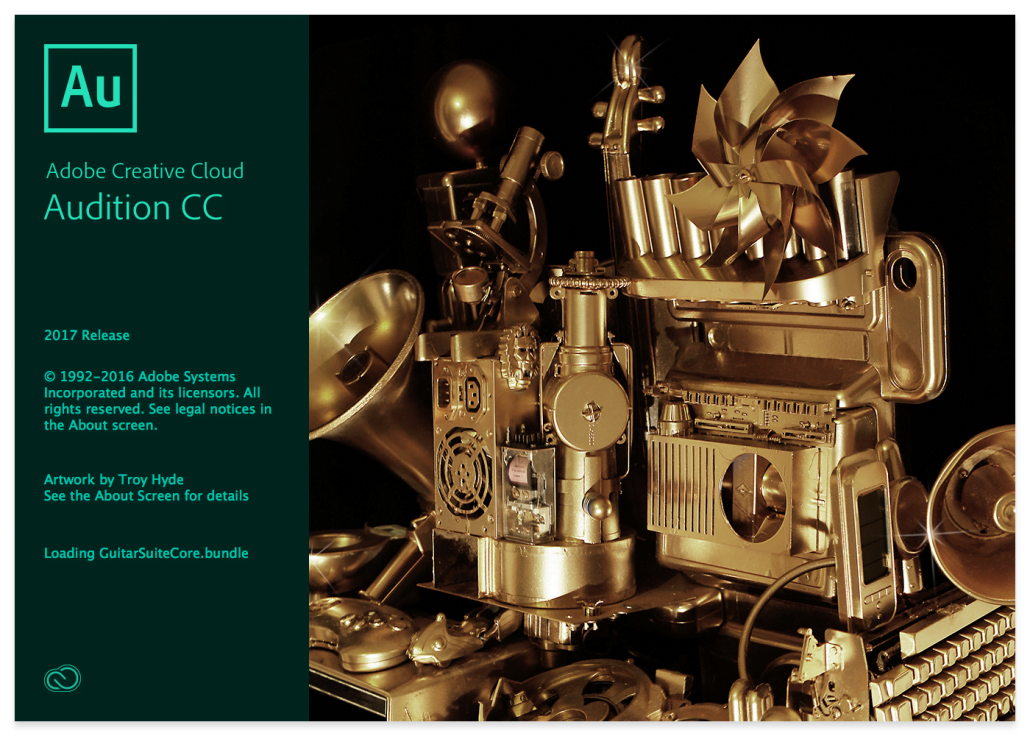From superblonde at the metal method forum
http://guitarlessonforum.com/guitar-...ife#post-16818
'Here is my current, very naive, work flow for transcription, tho I’m not very good at it, I keep tweaking my work flow to make the process faster. Still it takes dozens of hours per song. So I keep looking for ways to make myself better at it.. I can’t run riffstation on my current laptop (too old). I saw there is a desktop and ios app, Capo, which has a lot of stars on the apple app store, I cant run it either, but it says it figures out chords etc, automatically.
1. Find the song. almost always, on youtube. for difficult popular songs: also search “(track name) isolated” to find the (ripped) isolated tracks, but this doesn’t work for not-so-popular songs. Also search for live versions of the song, may be handy for later tricky parts.
2. use youtube-dl to download the youtube video to a local .mp3 or .mp4
3. buy the album. so I’m not ripping off the artist.
4. Make a new reaper project, set the BPM to 100. Setting BPM is handy for later. (Thanks to ROTM for confirming this tip)
5. import the .mp3 or .mp4 into a new Reaper project (importing mp4 is better). break out the hifi headphones.
6. 1st transcription step: Lyrics. Use reaper’s global slow downer and loop the complete track. First try might be 50%, then after a few loops, maybe to 70%. write down the lyrics on paper and figure out first guess at the song form. Use metronome with Tap Tempo to find BPM, write at top of lyric page. Dont trust lyrics posted online.
7. Use the cursor to scan thru the reaper project to locate the sections of the song. Add Markers to the start of intro’s, verses, choruses, outro’s.
I’ve started to realize that listening for drum fills, can also be a handy indicator of transitions to different song sections.
8. Make Regions using these markers, name the regions according to song part, like, Verse1 Verse2 Chorus1 Chorus2 Bridge, etc. On tricky parts, may have to use the metronome, sync’ed to the audio playback, to find the 1 beat, to find the start of sections, that’s where, tapping out the BPM early, helps out.
Starting to look like this, (altho this is a snapshot of transcribing licks, not song sections),
reaper-transcription-thing-hush
9. Set the global slowdowner to “1.0” and “Preserve Pitch”. Use Render, to render the project regions, using the output name, “Trackname-$region-$tempo.mp3”. Use “Add to Render Queue”. I think it’s called $tempo. It’s why setting the BPM to 100 is handy, because then tempo also mirrors the slowdown percentage and that variable can be used in the filenames easily. Note it would be easier and more direct if Reaper had a $rate variable which expanded to the Global Rate percentage, but, it doesn’t (I believe).
10. Change global slowdowner to .8, .7. .6, .5, .25. For each of these repeat step 9 to Add To Render Queue. (Make sure “Preserve Pitch” is checked otherwise it is a time wasting mistake.)
11. Render all in the render queue. Go make lunch, come back later. All the while, thinking, “There must be a better way to do all of this.” Ok now finally ready, there should be a ton of output files, like, Wildlife-Verse1-80.mp3 etc. Move all files to mp3 player. (mp3 player is optional but handy because, who wants to be chained to a laptop for the hard paper work in the next step.)
Work flow is pretty much done, now start the time consuming step.
12. For each song section, use the mp3 file starting at 70% slowdown, listen using Repeat-1, begin transcription using the lyric sheet to write out the chords and measures, with guitar in lap. Start with easiest song sections, like, maybe skip the intro until last. For tough parts, switch to the 25% slowdown version (that one is the most painful), and/or, loop in Reaper while watching the video, hopefully showing the guitarist fingering something. Four days and 40 hours later.. transcription is either progressing well, or all hope is lost and need to find the nearest jazz guy.
So… Rock n Roll is usually easy right? So it shouldn’t be that hard! Right? Right? :-/
13. Revisit the Reaper project periodically to fix bugs in the song form, like, what seemed like the Bridge, is not, it’s some Coda thing, which doesn’t follow anything, so just call it, Outro1 and Outro2 or whatever. Hopefully this doesn’t mean, re-rendering and getting all new mp3 output files, which basically means, song was guessed completely wrong, but, I’ve had to do that twice now.
14. Even if a song seems simple, do the above anyway, because the rendered files will definitely come in handy later.. there is always some trick to every song it seems like.. such as, later wanting to transcribe the drums “how’s that beat go again? It doesn’t sound right”..
I’m glad Doug explained his own early transcription method to me long ago, because, previously I really had been certain that “musicians must be doing this some better way, with better tools and more genius talent, since it seems I’m quite clueless here”.
'
http://guitarlessonforum.com/guitar-...ife#post-16818
'Here is my current, very naive, work flow for transcription, tho I’m not very good at it, I keep tweaking my work flow to make the process faster. Still it takes dozens of hours per song. So I keep looking for ways to make myself better at it.. I can’t run riffstation on my current laptop (too old). I saw there is a desktop and ios app, Capo, which has a lot of stars on the apple app store, I cant run it either, but it says it figures out chords etc, automatically.
1. Find the song. almost always, on youtube. for difficult popular songs: also search “(track name) isolated” to find the (ripped) isolated tracks, but this doesn’t work for not-so-popular songs. Also search for live versions of the song, may be handy for later tricky parts.
2. use youtube-dl to download the youtube video to a local .mp3 or .mp4
3. buy the album. so I’m not ripping off the artist.
4. Make a new reaper project, set the BPM to 100. Setting BPM is handy for later. (Thanks to ROTM for confirming this tip)
5. import the .mp3 or .mp4 into a new Reaper project (importing mp4 is better). break out the hifi headphones.
6. 1st transcription step: Lyrics. Use reaper’s global slow downer and loop the complete track. First try might be 50%, then after a few loops, maybe to 70%. write down the lyrics on paper and figure out first guess at the song form. Use metronome with Tap Tempo to find BPM, write at top of lyric page. Dont trust lyrics posted online.
7. Use the cursor to scan thru the reaper project to locate the sections of the song. Add Markers to the start of intro’s, verses, choruses, outro’s.
I’ve started to realize that listening for drum fills, can also be a handy indicator of transitions to different song sections.
8. Make Regions using these markers, name the regions according to song part, like, Verse1 Verse2 Chorus1 Chorus2 Bridge, etc. On tricky parts, may have to use the metronome, sync’ed to the audio playback, to find the 1 beat, to find the start of sections, that’s where, tapping out the BPM early, helps out.
Starting to look like this, (altho this is a snapshot of transcribing licks, not song sections),
reaper-transcription-thing-hush
9. Set the global slowdowner to “1.0” and “Preserve Pitch”. Use Render, to render the project regions, using the output name, “Trackname-$region-$tempo.mp3”. Use “Add to Render Queue”. I think it’s called $tempo. It’s why setting the BPM to 100 is handy, because then tempo also mirrors the slowdown percentage and that variable can be used in the filenames easily. Note it would be easier and more direct if Reaper had a $rate variable which expanded to the Global Rate percentage, but, it doesn’t (I believe).
10. Change global slowdowner to .8, .7. .6, .5, .25. For each of these repeat step 9 to Add To Render Queue. (Make sure “Preserve Pitch” is checked otherwise it is a time wasting mistake.)
11. Render all in the render queue. Go make lunch, come back later. All the while, thinking, “There must be a better way to do all of this.” Ok now finally ready, there should be a ton of output files, like, Wildlife-Verse1-80.mp3 etc. Move all files to mp3 player. (mp3 player is optional but handy because, who wants to be chained to a laptop for the hard paper work in the next step.)
Work flow is pretty much done, now start the time consuming step.
12. For each song section, use the mp3 file starting at 70% slowdown, listen using Repeat-1, begin transcription using the lyric sheet to write out the chords and measures, with guitar in lap. Start with easiest song sections, like, maybe skip the intro until last. For tough parts, switch to the 25% slowdown version (that one is the most painful), and/or, loop in Reaper while watching the video, hopefully showing the guitarist fingering something. Four days and 40 hours later.. transcription is either progressing well, or all hope is lost and need to find the nearest jazz guy.
So… Rock n Roll is usually easy right? So it shouldn’t be that hard! Right? Right? :-/
13. Revisit the Reaper project periodically to fix bugs in the song form, like, what seemed like the Bridge, is not, it’s some Coda thing, which doesn’t follow anything, so just call it, Outro1 and Outro2 or whatever. Hopefully this doesn’t mean, re-rendering and getting all new mp3 output files, which basically means, song was guessed completely wrong, but, I’ve had to do that twice now.
14. Even if a song seems simple, do the above anyway, because the rendered files will definitely come in handy later.. there is always some trick to every song it seems like.. such as, later wanting to transcribe the drums “how’s that beat go again? It doesn’t sound right”..
I’m glad Doug explained his own early transcription method to me long ago, because, previously I really had been certain that “musicians must be doing this some better way, with better tools and more genius talent, since it seems I’m quite clueless here”.
'
REAPER is a complete digital audio production application for computers, offering a full multitrack audio and MIDI recording, editing, processing, mixing and mastering toolset. REAPER supports a vast range of hardware, digital formats and plugins, and can be comprehensively extended, scripted and modified.



Cockos Reaper 5.25 Review


Cockos Reaper 5.25 For Sale
- EQ – reaEQ (From Cockos Reaper) Compression – reaCOMP(From Cockos Reaper) + EzMix2 Reverb – TC Electronic reverb + EzMix2 Electric Guitar – EzMix2. Everything else was deleted and uninstalled. If someday i need pro solutions, i’ll put my money on some producer i know or hire Graham.
- Cockos Reaper 5.25 Mac OS X D16 Group PunchBOX v1.0.2 Incl.Patched and Keygen WiNMAC-R2R FL Studio 12 Native OS X ALPHA 0.9d MAC Guda Audio DrumR v2.1 Incl Keygen (WiN and OSX)-R2R IK Multimedia AmpliTube 4 Complete v4.0.3 WiN-OSX Incl Keygen-R2R IK Multimedia Lurssen Mastering Console v1.0.3 WiN OSX Incl Keygen-R2R.
- Full-view of graph optional for precise editing. Mouse modifiers/mousewheel usable for editing bandwidth of points in graph. ReaEQ is part of the free ReaPlugs VST FX Suite. General features of ReaPlugs: Support for Windows 98/ME/2K/XP/Vista, WINE. Fast, usable UIs with good metering. Low CPU and RAM use.
- Purchase a license directly by sending a check or money order in USD, drawn on a US bank. $60: discounted license. $225: commercial license. Cockos Incorporated. Rosendale, NY 12472. New York residents please add. 8.875% sales tax (discounted licenses add $5.33; commercial licenses add $19.97). Please include your name and email so.